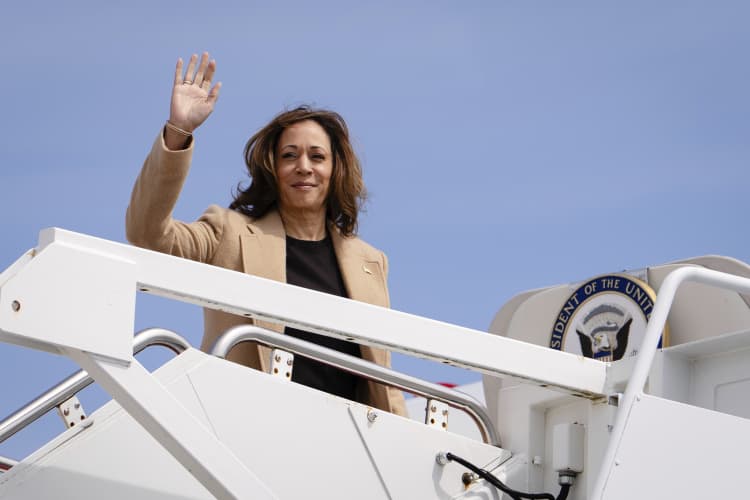Why Omaha’s 'Blue Dot' Can't Be Overlooked in 2024
The battleground states of Wisconsin, Michigan, and Pennsylvania – known collectively as the “blue wall” – are key in this year’s presidential race. To win all three is thought to guarantee Kamala Harris’ path to victory. Yet on America’s quirky electoral map, things are never simple. For Harris to walk the blue wall to victory, she would also have to secure something else: Omaha’s “blue dot.”
In Nebraska’s ocean of red, typically only the counties that house Omaha and Lincoln vote Democrat. A cluster of Democratic votes in a city is normally of no interest. But Nebraska is one of just two states (the other being Maine) where electoral votes are divided by district.
The state has five electoral votes: two from the state at large, and one from each of the three congressional districts. In 2020, Trump carried the state with over 58% of the vote, winning four electoral votes. Biden was able to flip the second district, which voted Republican in 2012 and 2016, carrying it by 6.6 points and winning one electoral vote.
It is this sole electoral vote – the blue dot – that has caused citizens of Omaha to put up yard signs with blue circles on them, as reported by CNN.
“It’s plausible that we could have a tie,” said Jason Brown, Nebraskan voter and creator of the yard signs. “The whole notion of ‘my vote doesn’t matter’ really gets tossed out the window. This could be it. This could be a deciding factor.”
Brown is right. If Harris wins the three blue wall states and Trump wins the battlegrounds collectively known as the “sunbelt states” – Arizona, Nevada, Georgia, North Carolina – the race could become a 269-269 tie, to be decided by the House of Representatives. Nebraska’s second district would get Harris to the 270 she needs and save the country the excitement and confusion a tie would undoubtedly entail.
There has only been one tied presidential election in history, when Thomas Jefferson and Aaron Burr competed against one another in 1800. The tie resulted in a “contingent election,” voted on by each of the 50 state delegations in the House. In 2024, the event of a tie is not necessarily likely but altogether possible, as evidenced by several different 269-269 scenarios.
If the Electoral College advantages the Republican party, state delegations are organized even more favorably, allowing each state one equal vote. Republicans currently have the majority in the House delegations of 26 states and are likely to increase that number in November. A simple majority – 26 delegations – would decide the presidency in the event of a contingent election.
While all this information is interesting, it is still unlikely to be relevant come November. Even the election of 1800 was a fluke, its tie more the result of party disarray than anything else. Still, both the Harris and Trump campaigns are focusing intently on NE-2.
For months, Trump’s team has sought to change the Nebraska law that awards electoral votes by district and instead implement the more common winner-takes-all rule. There has been a lack of sufficient support for the measure, however. As a backup plan, Trump is campaigning in Omaha’s suburbs and rural towns that are also a part of the district.
Harris, for her part, has poured about $1 million into advertising in Omaha, while outside groups have spent about $600,000, according to AdImpact. The Democratic party has $7.8 million in future bookings in the district, about $3.7 million coming directly out of the Harris campaign’s budget.
With the election this tight – Harris up just 1.9 points in the RCP Average – the campaign is taking no risks. Not a single area can be overlooked. Not even a dot.
2024 State Races
Get caught up on the most important polling for the most consequential races of 2024.

